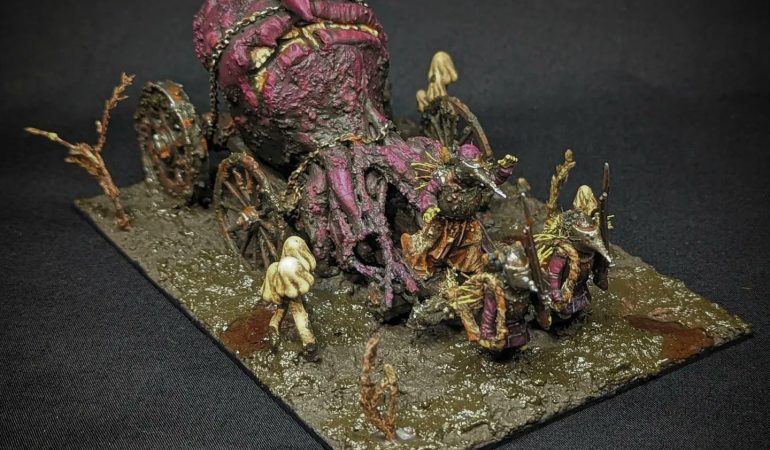
Greetings fellow root vegetable enthusiasts and welcome back to Part Two of the 22nd Bloody Beet Brigade – the series where I chronicle my ever growing collection of root vegetable themed post-apocalyptic Napoleonics for the game Turnip28. In Part One, I outlined what Turnip28 is, why I love it and introduced the core Snobs and Followers for my army. This this instalment, I’m going to explain what Cults are and show off some of my weirder and more interesting models for the army. Let’s get into it.
In Turnip28, your basic army composition is a Toff and Two Toadies. The Toff brings with them two units of Followers while each Toadie brings one. Followers consist of Fodder, Chaff, Brutes, Whelps, Bastards or a Stump gun – each of which I detailled over in my first post here. Additionally, you may choose a Cult for your unit.
Cults are the closet thing that Turnip28 has to factions. They operate in a similar sort of way to Space Marine Legions in the Horus Heresy. Some factions convey special rules to all of your units, while others simply give you access to one or more powerful unique units. Others may allow you to manipulate your opponents dice or provide ways to mitigate Panic. Most are sort of somewhere in between. The important thing is that Cults facilitate the creation of some of the wackier miniatures in the game.
Here’s some of the Cults miniatures that I’ve made for my Turnip army so far.
Stranglin’ Harry’s Wretched Recruits
Starting off simple, Stranglin’ Harry’s is the beginner-oriented Cult. It mainly focusses around building good habits for new players by rewarding smart plays (e.g. charging units with a blackpowder token) with the removal of Panic tokens. It also lets you use Rootlings. Rootlings come in packs of four, are hard to shoot at, have a decent amount of attacks and can be deployed 6″ further afield than your deployment line. They’re a bit like close combat oriented Chaff, with more attacks in close combat to make up for their lack of firearms or ability to choose targets.
To build mine, I pretty much just followed the guide in the Swollen Maglette – start with Nurglings, chop off some limbs, attach some green stuff roots, add leaves at the top, wrap with green stuff and sculpt on a face. You may recall the sad looking Beetroot that I painted on for my regimental standard in Part One of this series. Well, I really liked his sad face with the big limp nose – so I’ve modelled a lot of my Cults in his image. Each of my Rootlings has limp little nose in a similar vein – I think it especially works because it looks a bit like a root itself. I didn’t really intend the mouths to have these chunky lips, this was more of a happy accident that I stumbled onto on the first one – but I liked it, so I replicated it on the rest. The final step before painting was a thin coat of texture paint to give them that muddy, warty looking texture. They kind of remind me a bit of Krumm from Aaah! Real Monsters.
The Procession of Woe
The next cult, The Procession of Woe, is a more significant departure from a standard Turnip28 force. This time, the Cult replaces your Toff character with a model called a Rootshrine – a carriage of sorts upon which a Confessor alleviates and/or preys upon the fears of everyone on the battlefield. In game terms, the Rootshrine is a little tankier than a standard Toff, as well as featuring a special rule that lets you remove up to 2 Panic Tokens from a friendly model and give them to someone else. But wait, there’s more! Not only that, but your Snobs (Rootshrine included) become members of the Clergy with the ability to give a Friendly unit Fearless when they issue orders. Meanwhile, your followers become Zealous who gain extra attacks when they have 3 or more Panic tokens.
This leads to pretty weird and wonderful in game tactics, where you’re constantly shuffling around Panic tokens to make the appropriate units more effective in combat when you need them to be, as well as potentially loading your opponents models with Panic when it suits you. It’s a really fascinating playstyle for a more melee oriented force.
The Rootshrine was a very fun miniature to build. I built the carriage from the base of a Skaven Screaming Bell, with the front wheels coming from the Victrix Cannon kit. Dragging the procession is two basic Fodder models with a little twine over their shoulders, tied to the front of the cart. Of course, all of this is set dressing for the real star of the show here – the giant Bloody Beet. Once again, I based this design off the freehand heraldry on the banner carried by my Fodder unit – although I wanted the reality of the beet to come off as a little more grim and gritty than the iconography on the banners.
The core of this model is a huge blob of Milliput and Green Stuff wrapped around a spare 16mm dice to create a roughly oval shaped body. From there, I shoved a handful of dried twigs into the bottom and rolled up some long sausages of green stuff to create the roots coming out of the bottom. This was draped over the carriage and in amongst the sticks to create a nice mix of straight, spindly roots and thicker, droopier tendrils. After the basic shape was in place, I set about making the face. The basic premise of the face is similar to the banner design – a sad sloped mouth, mopey angled slits for eyes and a long overhanging nose. This time around however, I made a few tweaks from the design. I like the implication that the root is alive and sentient – but it’s most evocative when it’s just an implication. The teeth give it a kind of humanoid appearance – an extremely abnormal mutation for a vegetable – but leaving the eyes as empty slits gives it a kind of plausible deniability. To that end, I used a pack of resin teeth (originally designed for dentures) to press in around the mouth area and then sculpted the mouth on top of them. There are a few tears or holes in the mouth around the teeth – the kind of damage you might expect from digging something like this out of the ground – and I gave him thick lips for consistency with the Rootlings. The nose went on last, as with the rootlings, sagging pitifully over the face like another root.
Once everything was dry, I coated the model in a layer of AK Interactive Muddy Ground to give it that bumpy, warty, earthy texture. Finally, I slung a couple of hobby chains around his centre to keep him ‘attached’ to the cart and he was ready for a coat of paint. Not much to add about the paint job here – it’s the same method and colours as on everything else for the most part. The only exception being High Root Priest Chungus, who was built and painted in the same fashion as the other members of the Clergy below.
The Clergy were built using a combination of Perry/Victrix bits and the ever ubiquitous Empire Flagellants kit. They’re painted using the same colours as the rest of the army, only with the addition of orange-stained robes as seen on my previous attempts at Blanchitsu.
Of particular note is the Toadie on the right side of the above image, whom I based on a piece of art from the Turnip28 Swollen Maglette – from the trumpet head to the flaming beet on a rope. I’m also very happy with how the teeny tiny freehand of the Bloody Beet turned out on the model on the left.
Knights of Shellwood
Ah, the Knights of Shellwood. There’s just something intrinsically appealing about a concept of a Snail Knight – a hardy and reliable warrior, slowly and methodically making his way across the board for a big, mucus slick charge. So, of course, for my first iteration of this Cult I decided to make Highland Cows.
Around about the time that I started working on the Cults units for my Turnip28 army, I had some 3D prints fabricated for me of the Turnip pets available as part of the Turnip28 Patreon. More on those in Part Three of this series, but one of these models is a Root Ox. I didn’t realise it at the time of ordering, but the Root Ox comes in two variants – one with a bunch of packs, and one without. So it was that I ended up having a spare Root Ox model sitting around gathering dust. The cogs started to turn in my head and I realised that this Root Ox doesn’t look a million miles off of a Highland Cow – the perfect Cult unit for my Scottish-influenced Turnip28 warband. A quick flip through the available Cults and I ultimately landed on using this big beast as a Snail Knight proxy.
The Highland Cow itself I made by chopping off the Ox’s horns and reverting the direction to more closely resemble a Highland Cow and that’s.. kind of it. The paint job took care of the rest. To get a rider on the back, I had to snip and cut and file away at the waist before a pair of Agincourt Knight legs would fit – a bit of a faff, but nothing too strenuous. From there, I added on a 3D printed Fodder torso (I like the pointy helmets more than the frogmouth ones on the Brutes) and adorned the head with a lovely little bonnet that I found on my Warlord Games Landsknechts sprue. As on my Bastards and Whelps, I also draped a bit of kitchen roll over his shoulder to make the fly plaid.
The weapon – a traditional Lochaber Axe – the most fiddly part of the conversion. This was kitbashed from an Agincourt Knight’s lance with the tip replaced by a hook I found in the Slaanesh Seeker Chariots kit. A large scimitar blade from a Putrid Blightking was then cut and filed down to slim and smooth it down, then attached using a couple bits of green stuff. A bit of a faff, but worth the effort overall.
Painting wise, the Highland Cow itself was probably the biggest departure. I wanted it to look distinctly orangey brown but without coming across too clean or saturated. To that end, I started from a base coat of Beasty Brown and worked my way up adding layers of Orange Fire and Gold Yellow to the fur, before washing the whole thing with some Streaking Grime. After wiping off the excess with some white spirits, I’d come in again for a second pass of highlights with a mix Orange Fire and Gold Yellow to ensure the tips still popped. The horns and other rooty bits were just painted in Elfic Flesh then washed with the Streaking Grime. Once dry, I came back in with a couple thin washes of Barak-Nar Burgandy and Screamer Purple applied towards the base to provide that purpley tinge throughout. The rider himself was business as usual. Overall, the miniature was definitely one of the more time consuming in the army to paint, but given that Snail Knights are a single model as a unit, this wasn’t too much of a problem.
I’d originally intended to stop at one of these miniatures – using up the spare packless Ox miniature that I had on hand – but a little later down the line it occurred to me that the Knights of Shellwood can take up to two Snail Knights. Not one for half measures, I ordered a second Ox and converted up a second Snail Knight to join the first – and I’m pretty pleased at how well I replicated the scheme a couple weeks apart.
Aunts Ascendant
And finally, we make it to the big one. And make no mistake, this is a big one. This was by some measure the most challenging, awkward and exciting of my Cults units to work on. It was time consuming to construct, awkward to paint and I frankly have no idea how I’m going to transport this thing anywhere for a game.
Sure looks cool, though.
My Aunts Ascendant Observation Balloon is made of three distinct parts – the base, the basket and the balloon, each connected by an 8mm wide acrylic rod. There’s two of these rods in total, the first of which goes all the way into the balloon itself and connects to the inside of the basket, while the base rod connects to the top of the basket. These are joined by a 1.5mm brass rod which goes about an inch or so into both rods, preventing it from buckling under its own weight any time you lift it. It still wobbles though.
The balloon itself is what comes first and is made from – surprise surprise – a standard party balloon, partially inflated and then covered in several layers of homemade paper mache. This paper mache is made from strips of Plenty kitchen roll (which helpfully doesn’t disintegrate when wet), dunked in a tub of warm water, flour and PVA glue. The whole thing took days to finally harden and cure. Fortunately for me, I attempted this during the summer where I could leave the balloon on a warm windowsill – dramatically speeding up how fast the paper mache cured. Once this was dry, I made an attempt to try and sand it down to smoothen out the surface, without much luck. Instead, I decided to go the other way and smothered much of the balloon in Muddy Ground texture paste. When this was dry, I attached some dried twigs to the bottom with super glue to represent roots, reinforcing them with some milliput around the join.
The painting process for the balloon itself might have been the least stressful part of this whole build. I started by airbrushing the whole balloon in Barak Nur Burgandy and Screamer Pink zenithally, followed by some shading around the facial contours of the Bloody Beet. Once again, I copied my design from the company standard on my Fodder. I freehanded in the facial details with a brush, and glazed in some more shading around these facial features. It was kind of a weird experience painting this 2D banner design again on a rounded, 3D surface – but I think this turned out really well in the end. The final step was, of course, a light coating of Streaking Grime which was mostly wiped off, helping pick out and maybe lean into the texture in the surfaces.
Next up was the basket, which was created using wicker fence and gate parts from a Perry Medieval Cottage kit wrapped around a 40mm square Warlord Games base. These were not quite tall enough out of the box, so I had to combine two of them together to get the basket at the appropriate height, covering the join with a combination of texture paint and assortment of greeblies – mostly Turnip28 Shields from the Patreon, but also a banner and scrolls from the Empire Flagellants kit and bedrolls from the Perry Agincourt Knights. Around where the ropes connect to the basket, I also added a pair of bags of dirt which I made myself out of a bit of Milliput. As a final touch, I attached a bunch of Flagellant bells, chains and roots on the underside before covering the flat underside of the base with some Muddy Ground texture paste just to make it a little less flat.
I’m particularly proud of the crew in this Observation Balloon, which I tried to model like a pair of heckling commentators at the battle going on beneath them. There’s a bearded man with a bonnet peering through a spyglass, one arm outstretched in outrage. Meanwhile, his companion is standing bicorne hat in hand facepalming at the carnage unfolding below.
Painting wise the basket was fairly simple. I did try to spice things up a bit with different coloured checkers and patterns on the various shields, along with a couple Bloody Beet freehands on the parchment and banner, though neither of these are the best examples of this on the army. Once everything was painted, I attached everything together and then attempted to connect the ropes. This was standard 2 ply twine, attached with super glue at either side of the sand bags. These were attached to the balloon by hammering in four small nails around the back of the balloon (I didn’t want to cover the freehand face) with the twine draped across. A little streaking grime and orange wash on the nails and twine later, and the model was fully assembled and complete – ready to heckle the battlefields of Cist!
Well, that about covers all of my Cults for Turnip28 so far. This is just a small selection of the insane number of Cults available in this game – many of which I’m looking forward to painting myself in the future. Everything from mutant elephants and drunkards on stilts to big ol’ cannons and uhh.. well, gardeners. That’s saying nothing of all the units I’d like to add to the cults above, including – but not limited to – some melee equipped Fodder to act as ‘unwashed masses’ for my Procession of Woe.
Before then, however, there’s the small matter of a set of terrain for the game. Turnip28 has some pretty explicit rules for dangerous and defensible terrain, many of which are linked directly to the scenarios for the game. Anyway, the muddy county of Cist is half the charm of the setting – it wouldn’t be Turnip if I played it on a lush forest map or a Medieval town, right?
Until then, thanks for reading and happy wargaming!
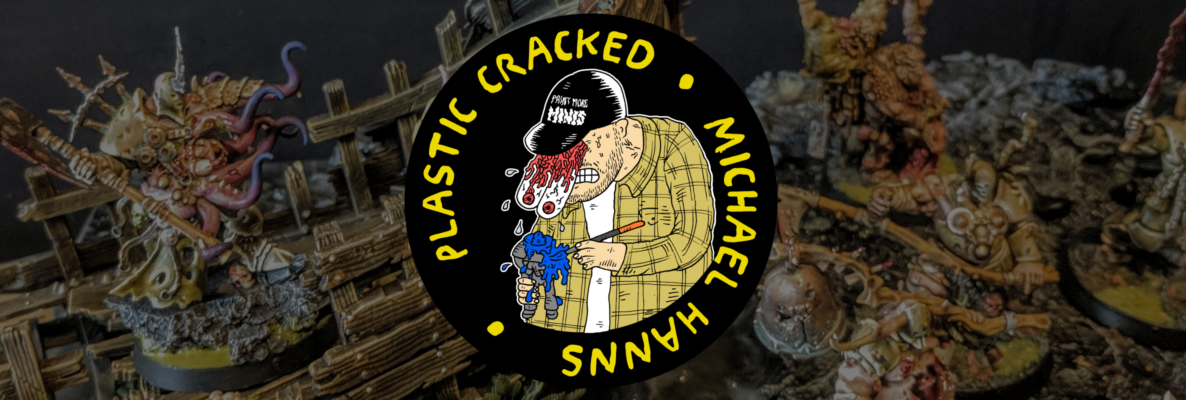
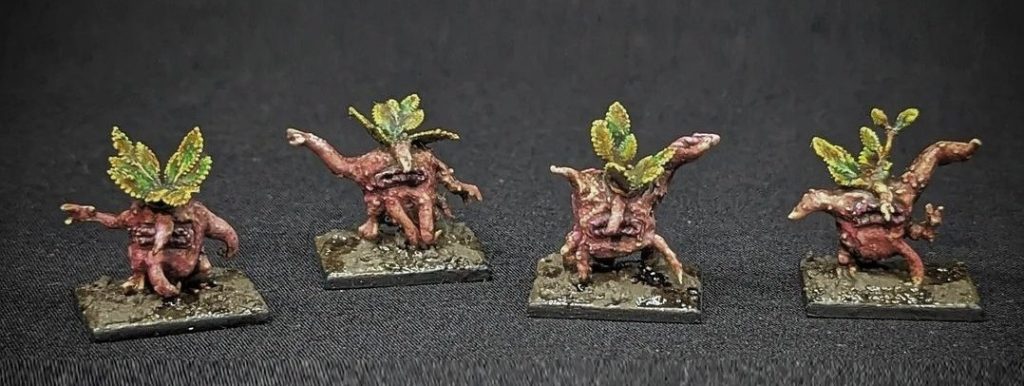
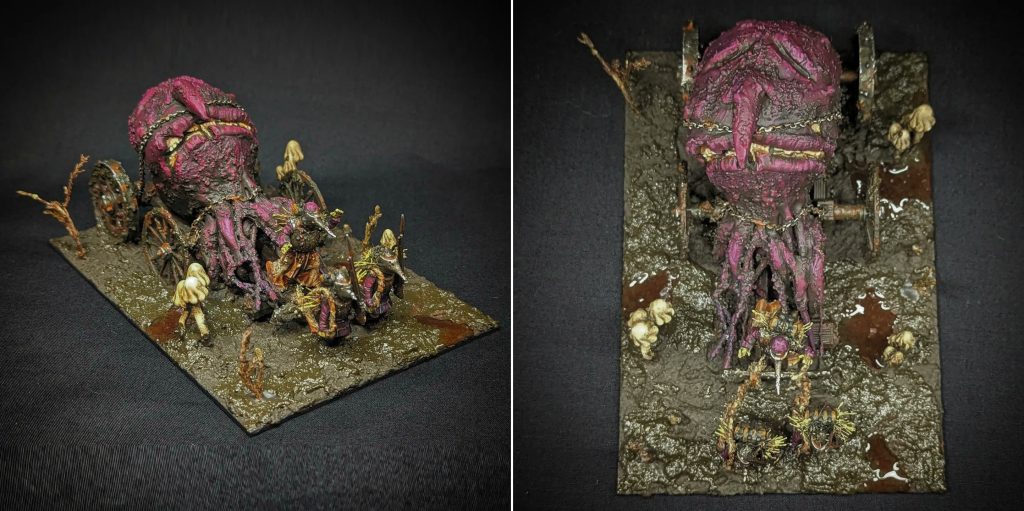
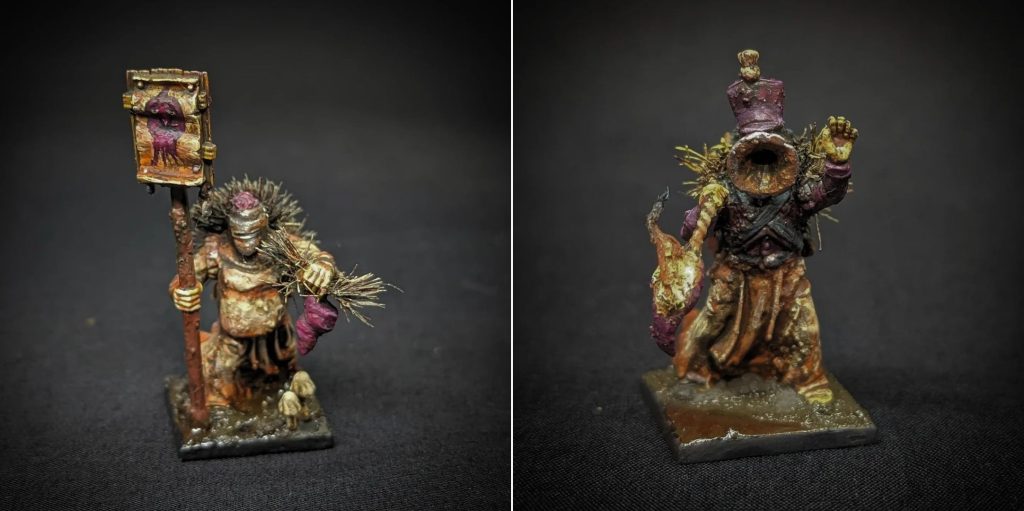
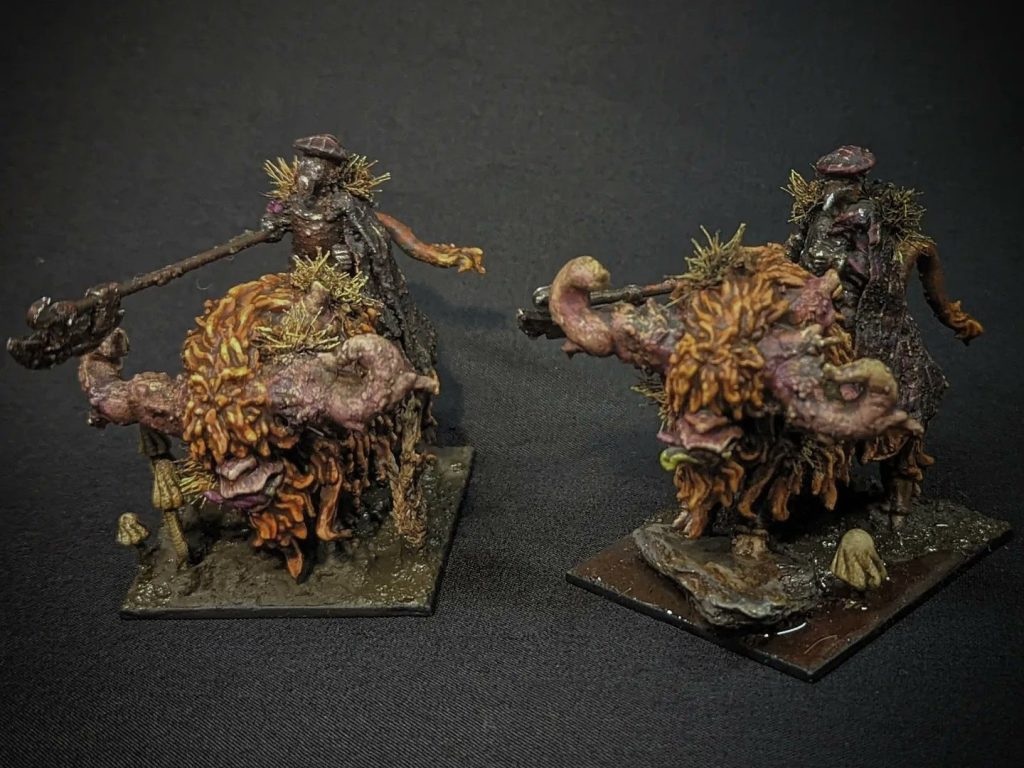
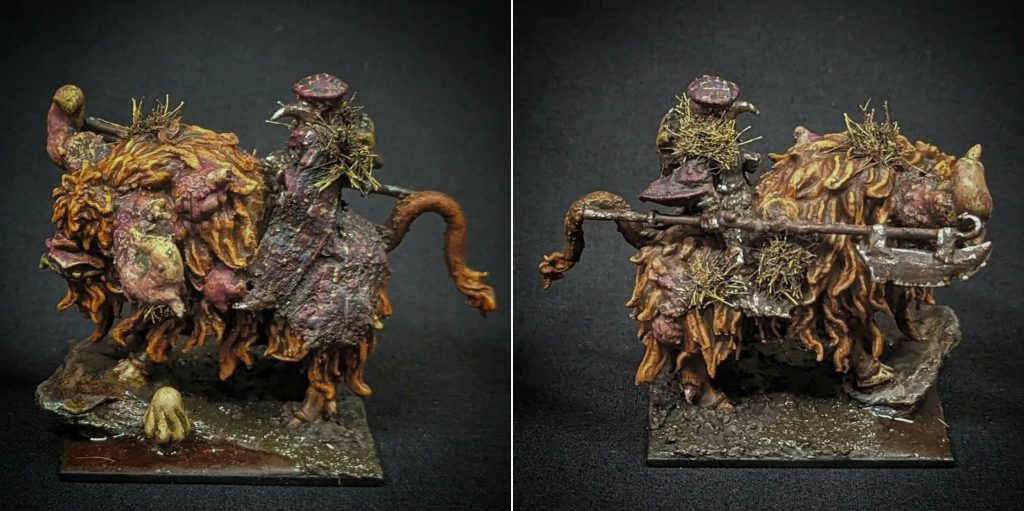
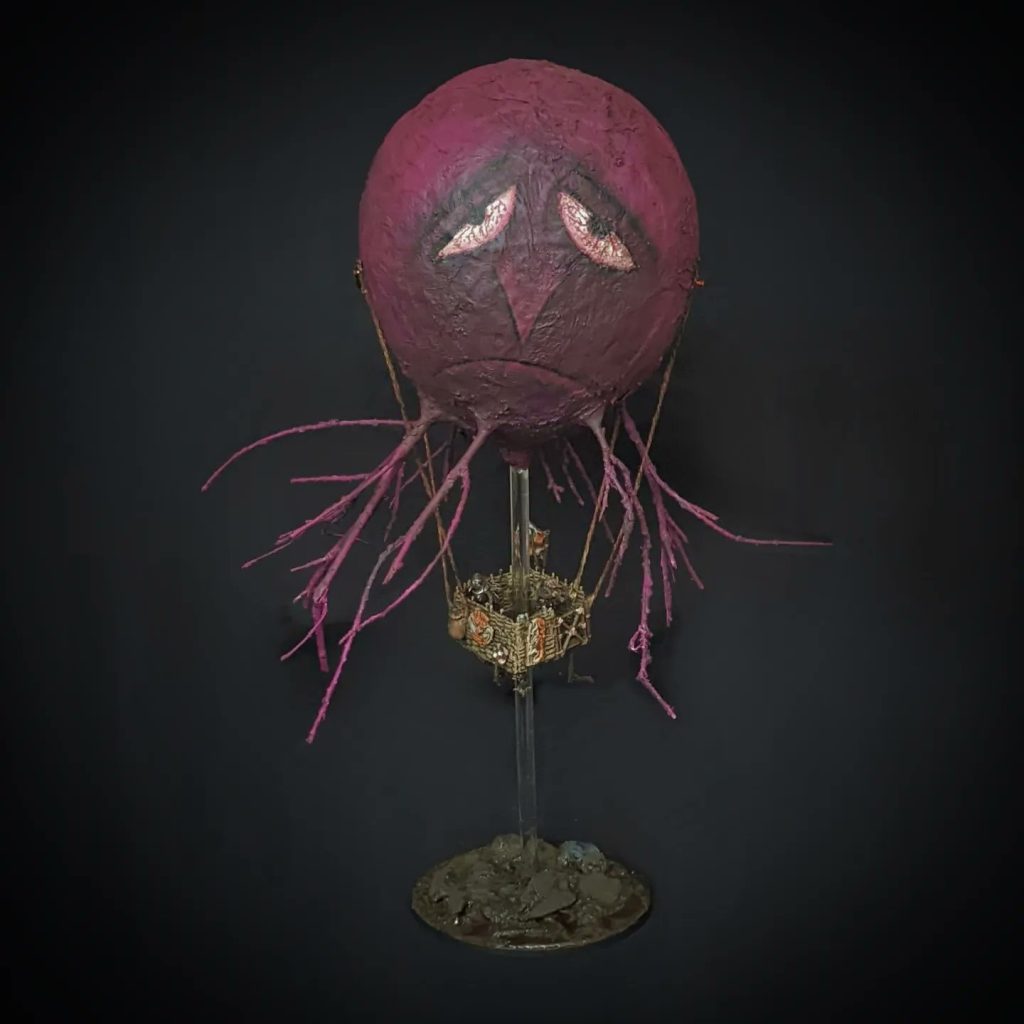
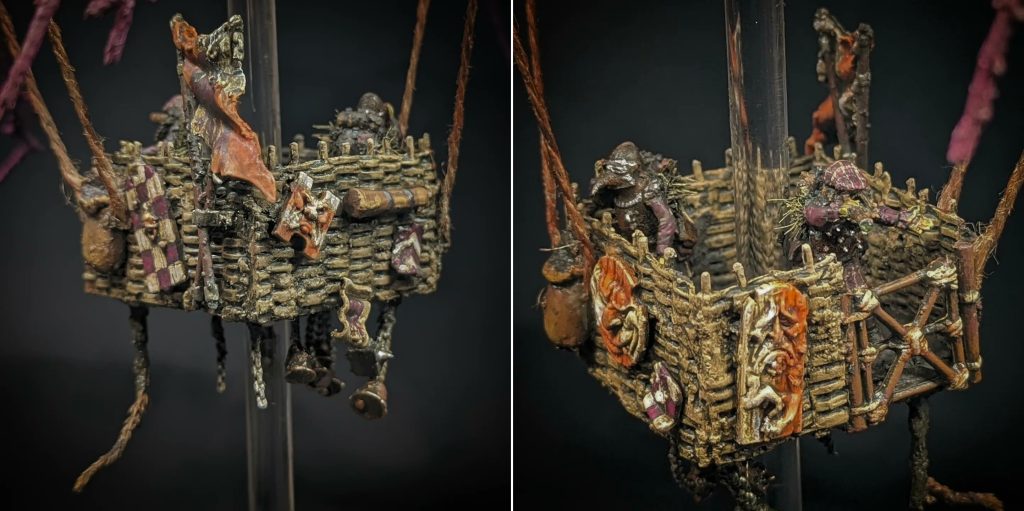
I love turnip 28 and these models are really well done!